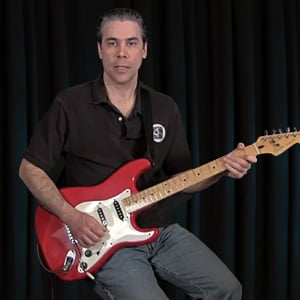Description
What does the left hand do?
The primary job of your left hand is to fret notes. This means you will use (mostly) your fingertips to apply enough pressure to the strings to hold them down against the frets in order to get a good, clear sounding note when you pick or strum the strings (with your right hand). Occassionally you will use the pads of your fingertips in order to fret more than one string at a time. You will also find it occassionally useful to use the entire length of a finger (usually your index finger) in order to barre across all or almost all the strings.
Regardless of which part of your left hand fingers you use to fret notes, you should always attempt to get your finger(s) as close to the fret as possible without being on top of it. The closer to the fret you can place your finger, the more leverage you can get and as a result the note will sound better and it will be physically easier to play. But, you do not want to be right on top of the fret because that will result in a poor sound.
Your left hand thumb also plays an important part of fretting notes. It is important to use it effectively by placing it on the back on the neck and using it to oppose the pressure of your fingers on the other side of the neck. Don't use your palm to cup the neck! Your thumb is called opposable for a good reason: it opposes your fingers and essentially makes your hand a very handy "clamp" which you are supposed to use to grip the neck.
